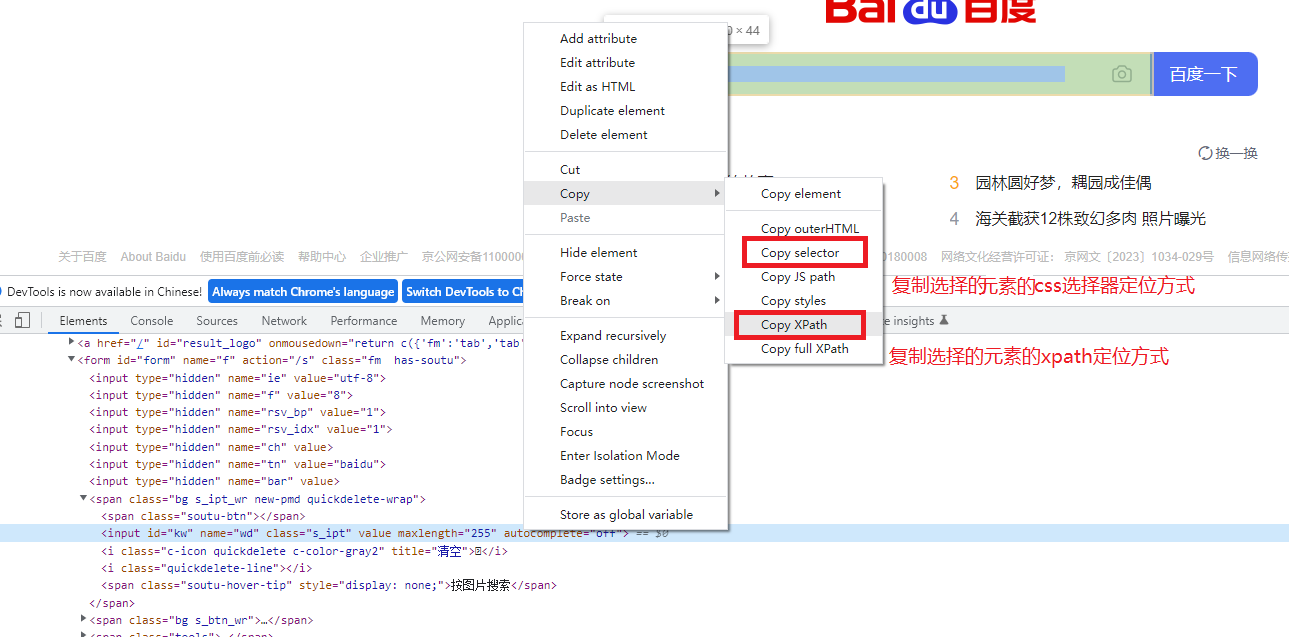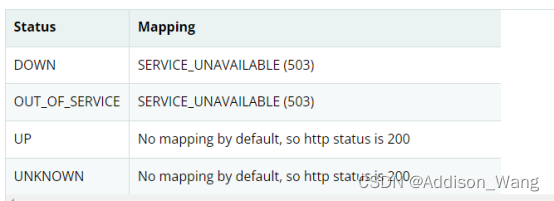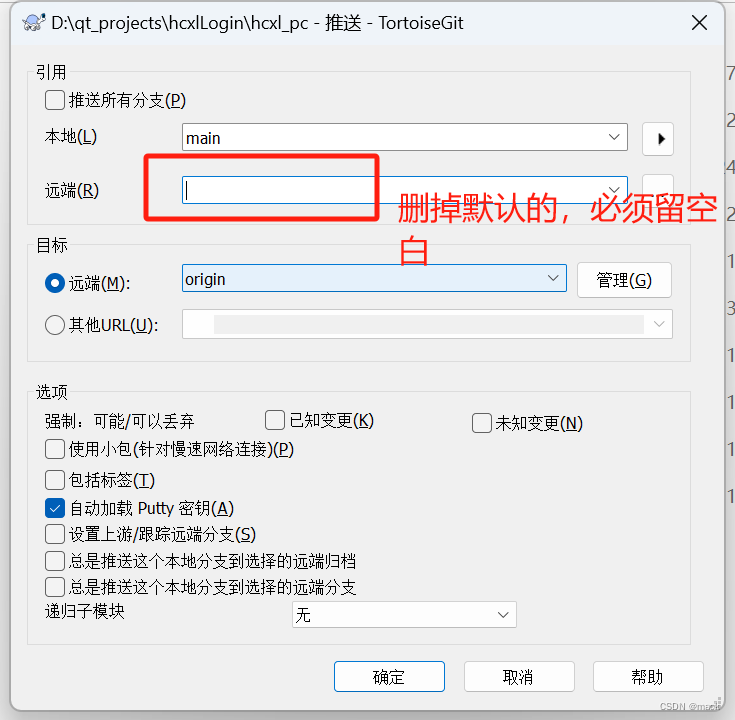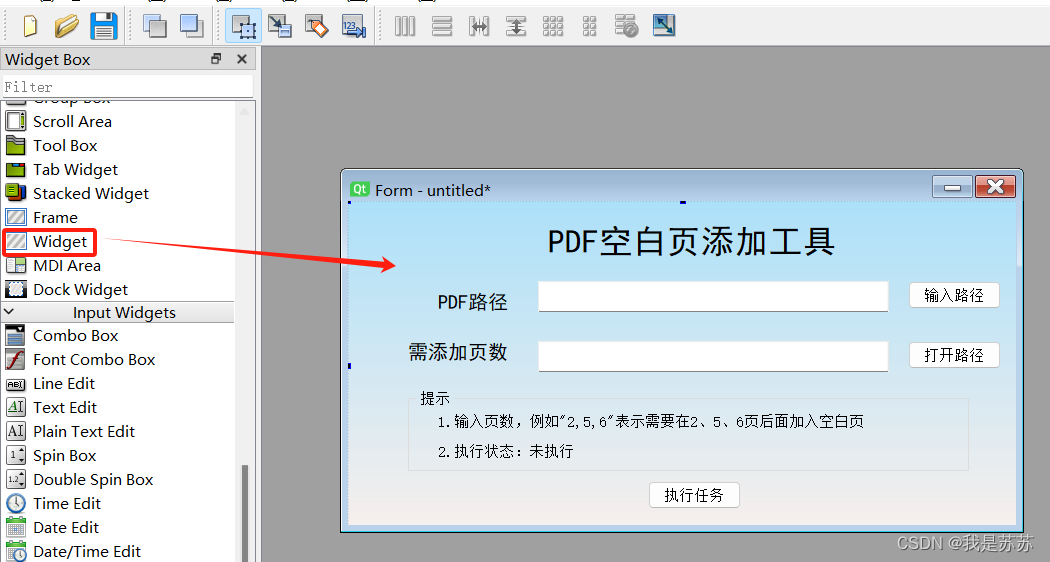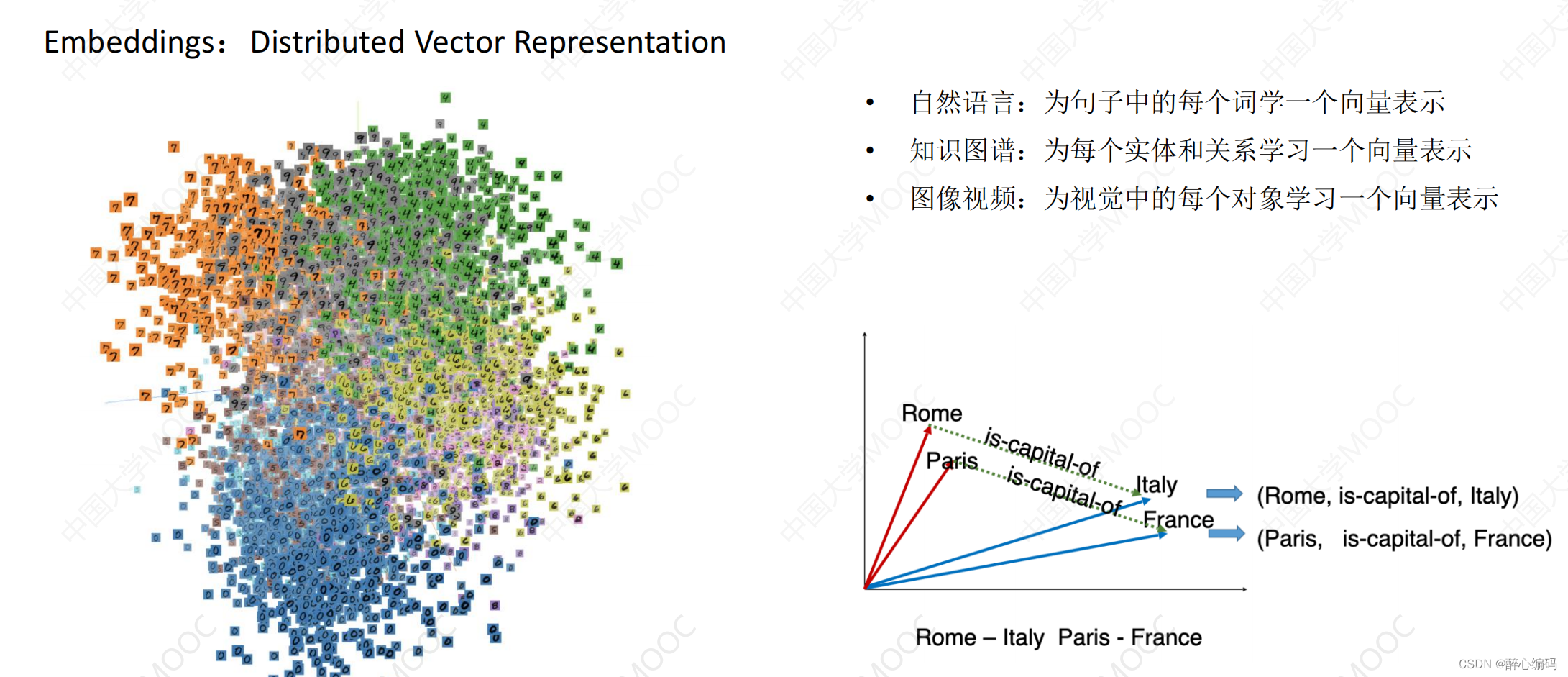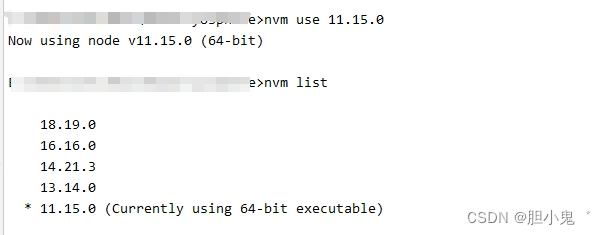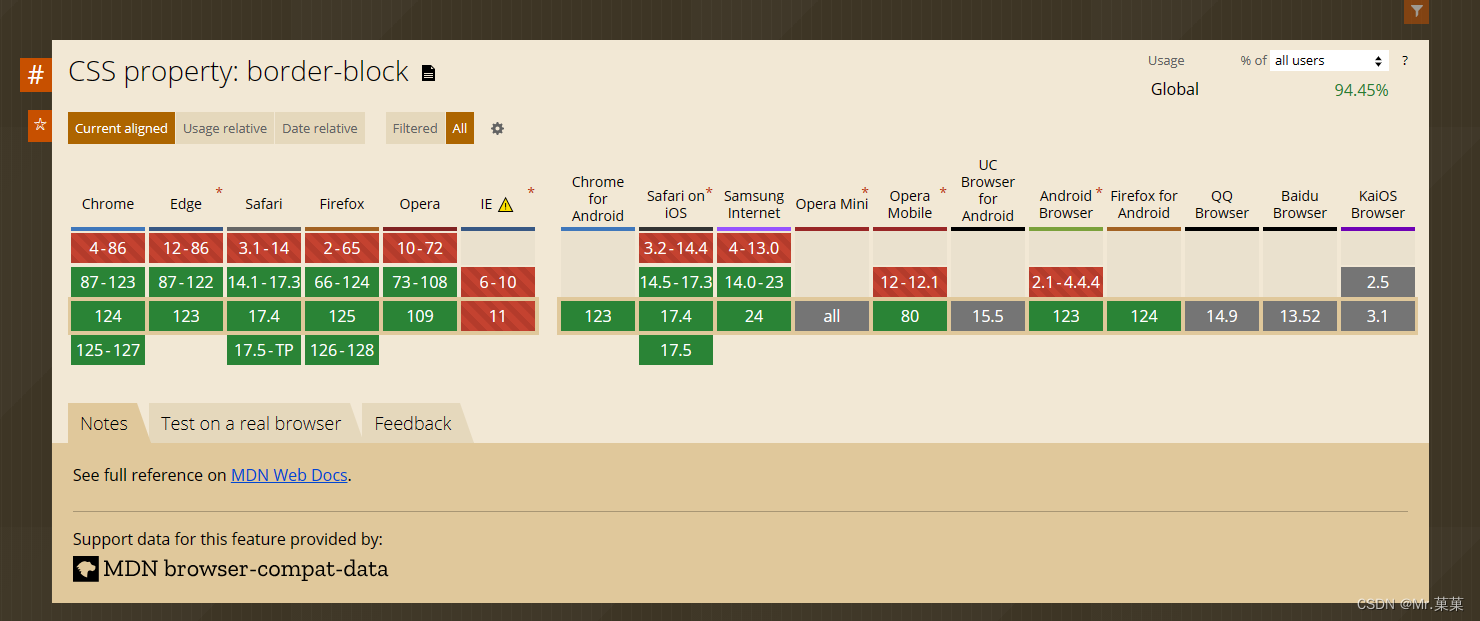文章目录
- 动态SQL
- < if > 标签
- < trim> 标签
- < where> 标签
- < set> 标签
- < foreach> 标签
- < include> 标签
动态SQL
在MyBatis框架中,动态SQL是一个强大的特性。它允许我们根据不同的条件动态的组装SQL语句,能够灵活的发挥SQL强大的功能,方便解决一些其他方法难以解决或解决方法繁琐的问题。
在MyBatis中,我们可以使用特定的标签来实现这些功能,如< if >用于条件判断,< choose >、< when >和< otherwise >用于多条件选择,< trim >、< where >和< set >用于处理SQL语句的前缀和后缀,以及< foreach >用于迭代处理。
< if > 标签
注解写法
- 把全部的sql放在script标签下
- 使用if标签
性别为空:
/**
* 性别字段为空
* @param userInfo
* @return
*/
@Insert("<script>" +
"insert into userinfo (username,password,age," +
"<if test='gender!=null'>gender,</if>" +
"phone)" +
"values(#{username},#{password},#{age}," +
"<if test='gender!=null'>#{gender},</if>" +
"#{phone})" +
"</script>")
Integer insert(UserInfo userInfo);
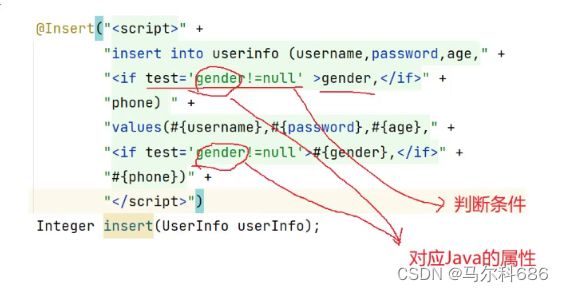
@Test
void insert() {
UserInfo userInfo = new UserInfo();
userInfo.setUsername("libai-2024-1");
userInfo.setPassword("liibaiiili");
userInfo.setAge(14);
userInfo.setPhone("10290192");
userInfo2Mapper.insert(userInfo);
}


XML写法:
<insert id="insertByXML">
insert into userinfo(username,password,age,
<if test="gender!=null">
gender,
</if>
phone)
values(#{username},#{password},#{age},
<if test="gender!=null">
#{gender},
</if>
#{phone})
</insert>
@Test
void insertByXML() {
UserInfo userInfo = new UserInfo();
userInfo.setUsername("libai-2024-2");
userInfo.setPassword("liibaiiili");
userInfo.setAge(18);
userInfo.setPhone("10290192");
userInfo2Mapper.insertByXML(userInfo);
}
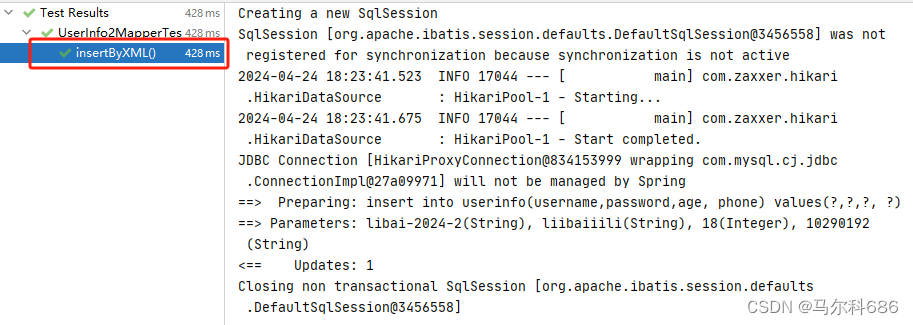

< trim> 标签
帮助我们去除多余的字符
prefixOverrides:去除trim标签代码块指定的字符
prefix:在trim标签代码块最前面添加制定的字符
suffix:在trim标签代码块最后面添加制定的字符
suffixOverrides:去除trim标签代码块最后面指定的字符
XML:
去除最后一个符号,去除括号:
Integer insertByXML(UserInfo userInfo);
<insert id="insertByXML">
insert into userinfo
<trim suffixOverrides="," prefix="(" suffix=")">
<if test="username!=null">
username,
</if>
<if test="password!=null">
password,
</if>
<if test="age!=null">
age,
</if>
<if test="gender!=null">
gender,
</if>
<if test="phone!=null">
phone
</if>
</trim>
values
<trim suffixOverrides="," prefix="(" suffix=")">
<if test="username!=null">
#{username},
</if>
<if test="password!=null">
#{password},
</if>
<if test="age!=null">
#{age},
</if>
<if test="gender!=null">
#{gender},
</if>
<if test="phone!=null">
#{phone}
</if>
</trim>
</insert>
@Test
void insertByXML() {
UserInfo userInfo = new UserInfo();
userInfo.setUsername("libai-2024-3");
userInfo.setPassword("liibaiiili");
userInfo.setAge(18);
// userInfo.setGender(1);
// userInfo.setPhone("10290192");
userInfo2Mapper.insertByXML(userInfo);
}
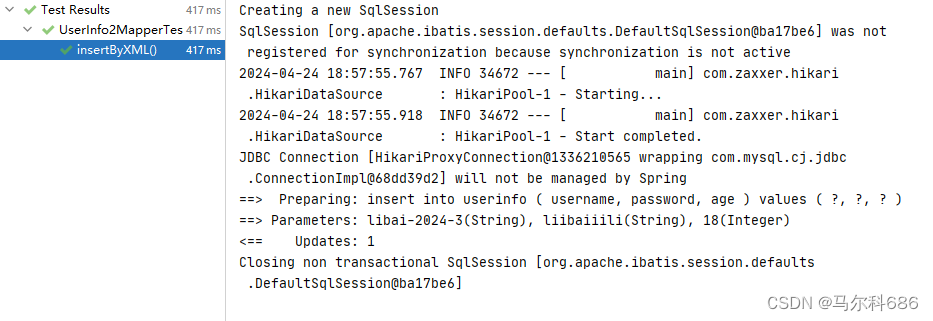

查询年龄为14的用户
List<UserInfo> selectByCondition(UserInfo userInfo);
<select id="selectByCondition" resultType="com.example.demo.model.UserInfo">
select * from userinfo
where
<trim prefixOverrides="and">
<if test="username!=null">
username = #{username}
</if>
<if test="age!=null">
and age = #{age}
</if>
<if test="gender!=null">
and gender = #{gender}
</if>
</trim>
</select>
@Test
void selectByCondition() {
UserInfo userInfo = new UserInfo();
// userInfo.setUsername("libai");
// userInfo.setGender(0);
userInfo.setAge(14);
userInfo2Mapper.selectByCondition(userInfo);
log.info(userInfo.toString());
}
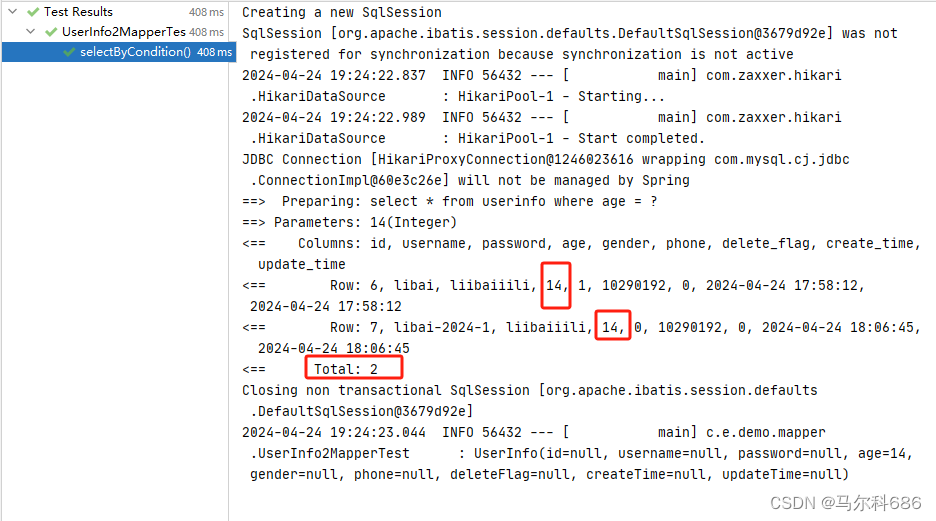

如果是查询来说,还有更简单的方式,就是使用where标签,where标签可以替代上面trim标签的功能
< where> 标签
它会把前面的and自动去掉
<select id="selectByCondition" resultType="com.example.demo.model.UserInfo">
select * from userinfo
<where>
<if test="username!=null">
username = #{username}
</if>
<if test="age!=null">
and age = #{age}
</if>
<if test="gender!=null">
and gender = #{gender}
</if>
</where>
</select>
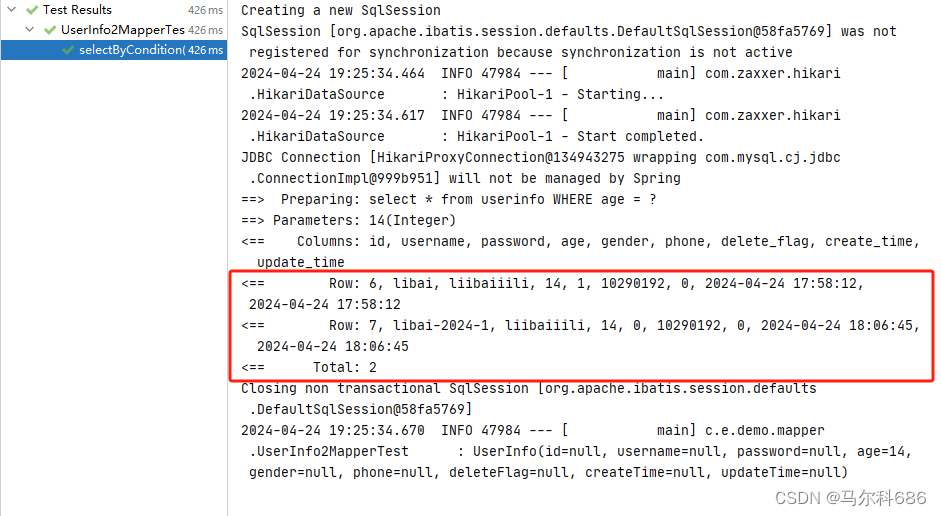
使用trim存在的问题,当所有条件都为空时,SQL语句会变成select * from userinfo where,如果查询条件都为空,where标签会自动去去除where关键字,还会帮我们去除最前面的and字符。
问题的解决方式:where 1=1
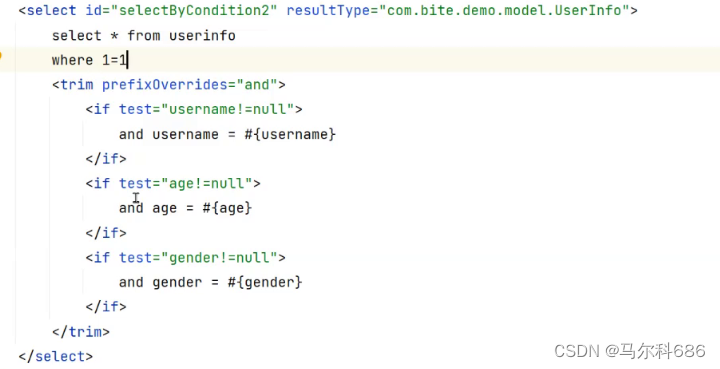
注解写法:
@Select("<script>" +
"select * from userinfo" +
" <where>" +
" <if test=\"username!=null\">" +
" username = #{username}" +
" </if>" +
" <if test=\"age!=null\">" +
" and age = #{age}" +
" </if>" +
" <if test=\"gender!=null\">" +
" and gender = #{gender}" +
" </if>" +
" </where>" +
"</script>")
List<UserInfo> selectByCondition3(UserInfo userInfo);
@Test
void selectByCondition3() {
UserInfo userInfo = new UserInfo();
userInfo.setUsername("libai");
// userInfo.setGender(0);
// userInfo.setAge(14);
userInfo2Mapper.selectByCondition3(userInfo);
log.info(userInfo.toString());
}

< set> 标签
修改id为 6的用户的信息

根据前面学的知识我们可以这样写:
XML写法:
Integer updateByCondition(UserInfo userInfo);(使用trim标签)
<update id="updateByCondition">
update userinfo
set
<trim suffixOverrides=",">
<if test="username!=null">
username = #{username},
</if>
<if test="age!=null">
age = #{age},
</if>
<if test="gender!=null">
gender = #{gender}
</if>
</trim>
where id = 6
</update>
上面的写法我们可以用 < set > 标签来代替:
/**
* 使用set标签
* @param userInfo
* @return
*/
Integer updateByCondition2(UserInfo userInfo);
<update id="updateByCondition2">
update userinfo
<set>
<if test="username!=null">
username = #{username},
</if>
<if test="age!=null">
age = #{age},
</if>
<if test="gender!=null">
gender = #{gender}
</if>
</set>
where id = 6
</update>
@Test
void updateByCondition2() {
UserInfo userInfo = new UserInfo();
userInfo.setUsername("libai2024-01");
// userInfo.setGender(0);
// userInfo.setAge(14);
userInfo2Mapper.updateByCondition2(userInfo);
}


< foreach> 标签
对集合进⾏遍历时可以使⽤该标签。标签有如下属性:
• collection:绑定⽅法参数中的集合,如 List,Set,Map或数组对象
• item:遍历时的每⼀个对象
• open:语句块开头的字符串
• close:语句块结束的字符串
• separator:每次遍历之间间隔的字符串

删除一个集合的数据
删除
id为7 8 9的数据

Integer batchDelete(@Param("ids") List<Integer> ids);
<delete id="batchDelete">
delete from userinfo
where id in
<foreach collection="ids" separator="," item="id" open="(" close=")">
#{id}
</foreach>
</delete>

@Test
void batchDelete() {
userInfo2Mapper.batchDelete(Arrays.asList(7,8,9));
}
删除成功:
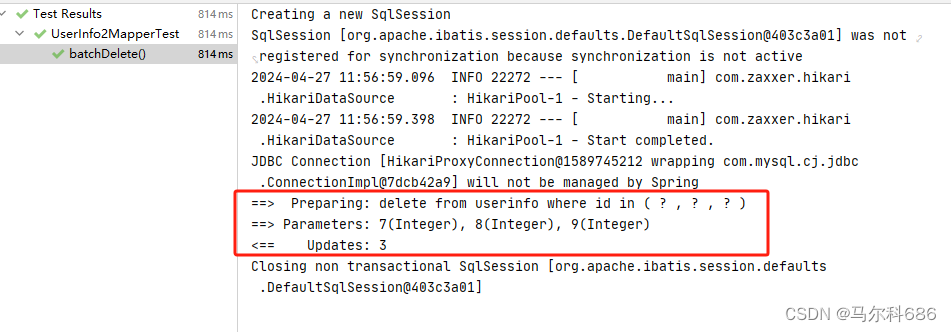

< include> 标签
在xml映射文件中配置的SQL,有时可能会存在很多重复的片段,此时就会存在很多冗余的代码。
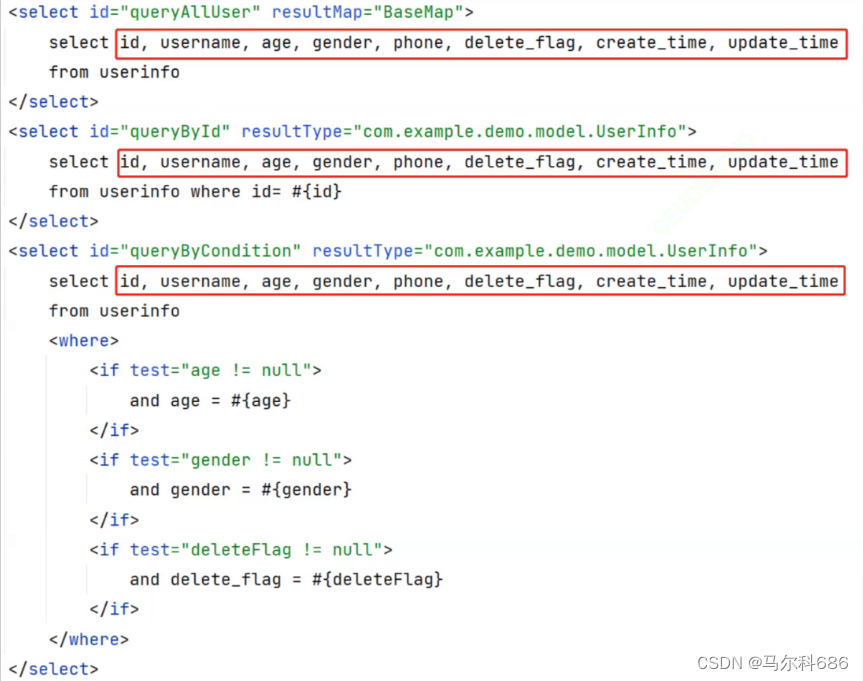
可以对重复的sql段进⾏抽取,通过 < sql > 标签封装到⼀个SQL片段,然后再通过<include>标签进行引用。
• < include > :标签进⾏引用。
• < sql > :定义可重⽤的SQL片段
• < include > :通过属性refid,指定包含的SQL片段
<sql id="allColumn">
id, username, age, gender, phone, delete_flag, create_time, update_time
</sql>
通过 <include> 标签在原来抽取的地⽅进⾏引⽤。操作如下:
<select id="queryAllUser" resultMap="BaseMap">
select
<include refid="allColumn"></include>
from userinfo
</select>
<select id="queryById" resultType="com.example.demo.model.UserInfo">
select
<include refid="allColumn"></include>
from userinfo where id= #{id}
</select>
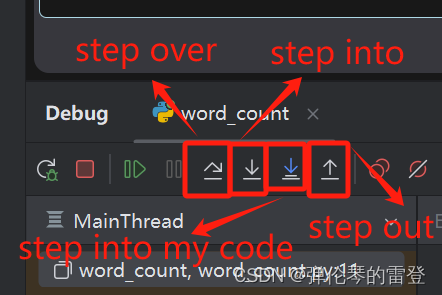

![[华为OD] 给航天器一侧加装长方形或正方形的太阳能板 100](https://img-blog.csdnimg.cn/direct/51754d605de44c40aec2e6d0fecada95.png)

